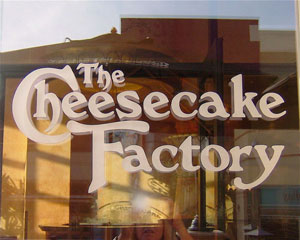••• retailing research
The coupon-agnostic Santas
Holiday shoppers say they’ll go where the deals are
Given the current state of the economy, nearly half of U.S. adults (45 percent) plan to spend less this coming holiday season than they did last year. Yet many adults are not taking advantage of online coupons that could help stretch their holiday dollars, instead relying on circulars and newspapers for their coupon-clipping. Less than half (48 percent) say that they are likely to look for online coupons or coupon codes before making a (holiday) purchase, according to a study from New York research company Ipsos Public Affairs on behalf of Offers.com. 
Additionally, despite the convenience and discounts from shopping online, most consumers actually prefer shopping brick-and-mortar. If the merchandise and deals were the same, 69 percent of adults report that they would prefer to shop in retail stores, while just 26 percent would opt for shopping online. Four percent have no preference and 1 percent are unsure. However, if they could find better deals online this holiday season, 47 percent say that they would prefer to do their shopping online. Still, as many (46 percent) say that they would go into retail stores, meaning that they would forgo the online deals in order to shop in person. Five percent have no preference between the two and 2 percent are unsure. Over half (54 percent) of adults under 55 would shop online if that’s where they could find better holiday deals compared to just 35 percent of adults 55 and over.
In general, consumers utilize a variety of types of coupons but the most commonly-used are those from newspapers or magazines, with 50 percent of adults saying that they have taken advantage of these savings opportunities in the past 30 days. Nearly as many (47 percent) say that they have used a loyalty card or in-store promotion in the past month, though fewer have used printable coupons (28 percent); daily deals (27 percent); or online coupon codes (25 percent). Eleven percent say that they have taken advantage of some other kind of savings opportunity, while 15 percent have not utilized any of these promotions.
Less than half report that they are likely to look for online coupons or coupon codes before making a holiday purchase, while 51 percent say that they are unlikely to do so. A greater proportion of women than men say that they are likely to look for online coupons or coupon codes before making a purchase this holiday shopping season (52 percent vs. 43 percent). Adults under 55 are also more likely than those who are older to say this (53 percent vs. 37 percent). Parents are also more likely to hunt for these deals than are adults without children under 18 (58 percent vs. 43 percent).
Perhaps to make their shrinking holiday budgets go farther, half of consumers (49 percent) find deals throughout the year and an additional 27 percent keep their eye on online specials and daily deals, while just 18 percent wait until Black Friday or Cyber Monday to start their shopping. Fourteen percent were unsure.
Another strategy some consumers are using to get the most bang for their buck is spending time looking for the best possible prices. While many adults (45 percent) report spending less than an hour researching the best prices for each of their holiday purchases, most adults (51 percent) actually report spending at least an hour doing so – including 38 percent who say that they spend one to three hours and 14 percent who report spending over three hours.
When it comes to frequency of online shopping, 11 percent report making an online purchase at least once a week and another 20 percent do so monthly. However, 38 percent say they shop online only a few times a year and a third never shop online. Among those who do shop online, 16 percent say that they always look for a coupon or coupon code to make their shopping dollar go farther and an additional 24 percent do so most of the time. However, a majority of online shoppers are overlooking opportunities to save, looking for online coupons only once in a while (37 percent) or never (23 percent). Women (20 percent vs. 11 percent of men) and parents with children under 18 (21 percent vs. 13 percent of those without children under 18) are most likely to say that they always look for coupons when shopping online.
www.ipsos-na.com
••• social media research
The 140-character complaint
Twitter users want companies tuned in to feedback
It’s no secret that social media has revolutionized how consumers communicate with businesses. Instead of complaint letters exchanged over weeks, a quick 140-character tweet can garner a direct response within minutes. A poll from St. Louis research company evolve24: A Maritz Research Company found that frequent Twitter users who have used the social media tool to complain about their customer experience with a company overwhelmingl y want those companies to listen to their comments and address their public complaints.
y want those companies to listen to their comments and address their public complaints.
While only one-third of these respondents actually received some type of follow-up after they tweeted their complaint, 83 percent of survey participants who received a follow-up to their tweet said they liked or loved hearing from the company they complained about. And just under 75 percent of those people who received a response were very or somewhat satisfied with the response they received. A little more than 15 percent said they were either very or somewhat dissatisfied with the company’s response.
For the two-thirds of respondents who didn’t receive an answer to their complaint, 86 percent would have liked or loved to hear from the company. However, a striking 63 percent said they would hate or not like it if the company contacted them about something other than their complaint.
“Businesses cannot effectively compete without being tuned in to social media to improve the customer experience. But they must get the messaging right. The best brand marketing provides responsive customer service and does not use a customer experience event as an opportunity to sell something,” says Anthony Sardella, senior vice president and managing director at evolve24.
www.evolve24.com
••• restaurant research
Diners like breaking free from the chains
Independent restaurants score with unique menus, buy-local appeal
Battling with low operator and consumer confidence, rising food costs and a lack of corporate support, independent restaurants can be especially hard-hit during poor economic times. However, indies may have some advantages over their competition, as 43 percent of American consumers who have visited one in the past month seek out independent restaurants over chains, according to data from Chicago research company Mintel. Moreover, 52 percent of independent restaurant users say they visit these establishments to support their local community/economy while 51 percent agree that independent restaurants do a good job of supporting their local community. This is compared to 37 percent who say the same of chain eateries.
Moreover, 52 percent of independent restaurant users say they visit these establishments to support their local community/economy while 51 percent agree that independent restaurants do a good job of supporting their local community. This is compared to 37 percent who say the same of chain eateries.
“People take pride in their communities and will often reward local businesses that make their community a better place,” says Eric Giandelone, director of Mintel Foodservice. “The primary way indies underperform in relation to chains is through a lack of promotions and limited-time offers, two things that could be easily addressed with social shopping and social networking sites.”
Among those patrons who had not visited an independent restaurant in the past month, 22 percent of respondents said it was too expensive but over half (56 percent) of people say they are willing to pay more at an indie. The majority of diners are willing to pay up to 10 percent more for an independent dining experience for similar food and service found at a chain.
“Independent restaurants have the advantage of being able to provide a unique experience for customers and have the freedom of not having to comply with government-mandated laws that chains have to face,” says Giandelone. “While chain restaurants are able to offer up a big helping of value and convenience, they need to focus on areas of opportunity where independents are rated better, such as unique menu items and local flair.”
Forty-two percent of restaurant-goers say independents are superior to chains when it comes to food quality and the ability to customize their orders. However, 21 percent believe they do a worse job than chains in regards to convenience and 20 percent say they fall behind chains in the area of fast service.
www.mintel.com
 ••• families and children
••• families and children
Child’s play
Mobile devices bring parents and kids together
Mobile devices have quickly gained traction inside households with kids and are becoming one of the primary platforms for play. Three-quarters of U.S. children ages two-to-13 have access to smartphones, with one-third of 10-to-13-year-olds owning their own. In addition, half of kids have access to an iPod Touch; over one-quarter to a tablet; and one-quarter to an e-reader, according to a report from Asheville, N.C., research company PlayScience.
“We’ve surpassed the tipping point for kids and families engaging in content via mobile devices. Computers and televisions aren’t dead yet but the expectation of having your favorite content and characters with you at all times has definitely become the norm for both kids and parents,” says J. Alison Bryant, president of PlayScience.
Parent-child co-play on mobile devices is generally happening through single-player games that they pass back and forth, competing to obtain high scores or to reach new levels. Although they enjoy this type of competitive play, parents report they are interested in having more opportunities to play cooperatively with their kids in the future.
Dads in particular are playing a key role in defining how mobile devices are being used in the home. They are also more likely to spend money on apps, paying an average of 45 cents more than moms for phone apps and 75 cents more on tablet apps.
www.playsciencelab.com
••• restaurant research
2011 casual-dining rankings
Olive Garden wins people’s choice, Cheesecake Factory takes top honors overall
Cheesecake Factory is the nation’s favorite casual-dining restaurant, followed by Texas Roadhouse and Olive Garden, for the second year in a row, according to a survey conducted by Market Force Information, a Boulder, Colo., research company.
The survey examines which casual-dining restaurants consumers prefer and which attributes are the most important to them. Market Force first calculated the favorites based on the pure number of votes and then factored in the number of locations for each chain to effectively measure which chain garnered the most votes per restaurant. When the consumers were shown a list of the country’s 51 top casual-dining restaurants and asked to select their single favorite, Olive Garden earned the most raw votes (for the second consecutive year), followed by Applebee’s (which tied for first place with Olive Garden in 2010) and then Red Lobster, Chili’s and Outback Steakhouse.
When the consumers were shown a list of the country’s 51 top casual-dining restaurants and asked to select their single favorite, Olive Garden earned the most raw votes (for the second consecutive year), followed by Applebee’s (which tied for first place with Olive Garden in 2010) and then Red Lobster, Chili’s and Outback Steakhouse.
However, the top vote-getters are not necessarily the consumer favorites. Since consumers are only likely to vote for restaurants they patronize and that are located in their area, Market Force indexed the results to account for the number of restaurant locations per chain. When the votes were weighted, Cheesecake Factory was the first choice among consumers by a wide margin, earning 7.3 percent of the vote share – more than double the 3.2 percent earned by the second-place finisher Texas Roadhouse. Olive Garden came in third in the study with 2.8 percent, and P.F. Chang’s and Carrabba’s Italian Grill followed in fourth and fifth place, respectively. Sixteen chains made it to the top of the rankings, each collecting 0.2 percent or more of the vote.
On the flip side, restaurants that are not tickling as many tastebuds this year include Denny’s, IHOP and Ruby Tuesday. While in the top 16 overall, all three landed on the bottom of these rankings with one-half percent of the vote.
Market Force attempted to uncover why respondents prefer one casual-dining restaurant over another by asking those who selected a given brand as a favorite to rate them by attributes such as food quality, taste, speed of service, cleanliness and value. The categories with the greatest variance in consumer ratings were value and speed of service. Consumer favorite Cheesecake Factory did not excel on any one attribute but it fared well across all of them, particularly in the important areas of food quality and taste. Golden Corral scored highest on value – a category showing quite a bit of differentiation – as well as on speed of service, which is logical given it offers a self-service buffet.
Market Force also looked at how the chains differentiate by other noteworthy attributes, such as healthy choices, accommodating children, atmosphere and green/sustainable practices. Ruby Tuesday was called out for having the healthiest menu choices, Golden Corral was the most kid-friendly, Carrabba’s rated highest for atmosphere and IHOP led in sustainable/green practices, a category where several restaurant chains received zero votes. Meanwhile, Red Robin ranked lowest in both the atmosphere and healthy choices categories and P.F. Chang’s was at the bottom for accommodating children.
www.marketforce.com
